#russian rococo
Text

Élisabeth Vigée Le Brun (French, 1755-1842) • Portrait of Grand Duchess Yelizaveta Alexeyevn • 1795 • Hermitage Museum, St. Petersburg, Russia

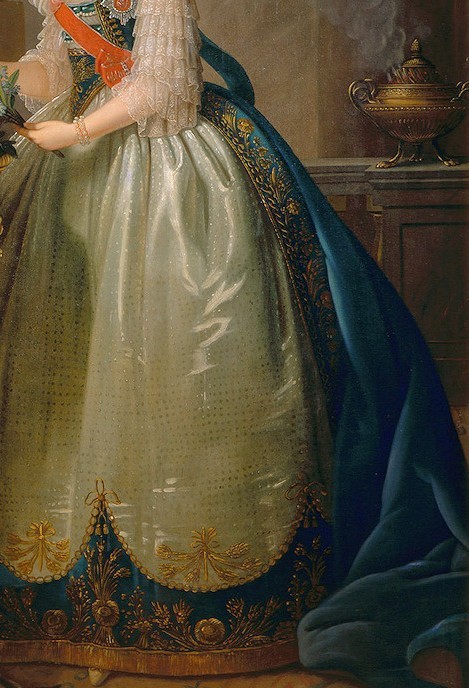
Details
#art#painting#fine art#art history#élisabeth vigée le brun#woman artist#french artist#romanticism#rococo#portrait#royal portraits#historical painting#yelizaveta alexeyevn#russian royal family#18th century european art#pagan sphinx art blog
9 notes
·
View notes
Photo

Élisabeth Vigée Le Brun, 1796 - Les Grandes-Duchesses Alexandra et Eléna Pavlovna, Filles de Paul (L'Ermitage) - (Detail) [x]
#Vigée-Le Brun Elisabeth#Madame Le Brun#les grandes duchesses#les grandes duchessses alexandra et elena pavlova#art#art details#art history#russian nobility#alexandra pavlova#elena pavlova#french#french artist#french art#women artists#18th century#18th century art#post rococo#rococo art#french rococo#neoclassical#neoclassicism#aesthetics#royalty#royalty aesthetic
98 notes
·
View notes
Text
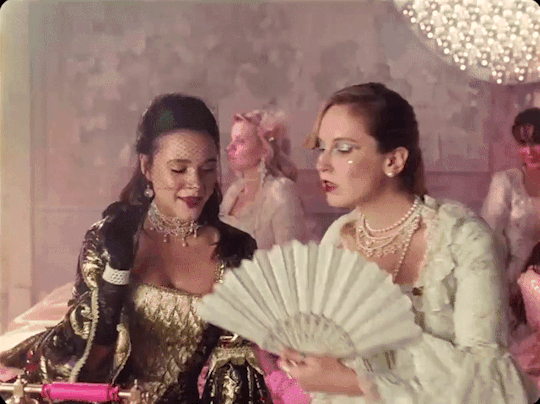
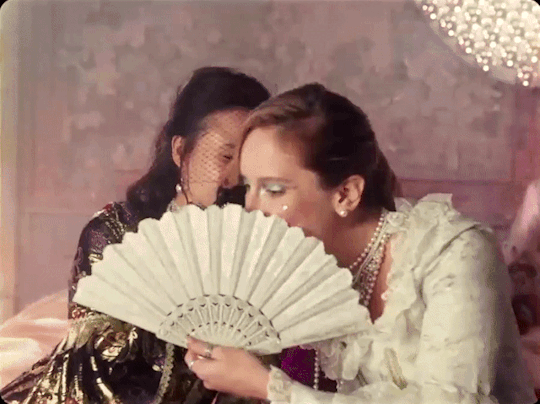
TATARKA – KAWAII
4 notes
·
View notes
Text
Adolescence of Utena -- Architecture x Character Designs
Dunno if I read it from somewhere, but I realized that Utena's new uniform is styled somewhat like the architecture of Adolescence Ohtori, namely how her clothes are black and white (later with red accents) . Whereas Utena stands out in the world of RGU, she blends right into Adolescence Ohtori, almost as if she is a part of the architecture and vice versa.

The movie is also called The *Adolescence* of Utena (or Girl's Revolution Utena: Adolescence Apocalypse), and in the show, we see adolescent Utena wear black and white at the funeral. I think that her wearing this scheme again in the movie is a sort of return to her adolescence. Not to say that she regressed back into the child she was before the show, but more so to represent the child that Utena still is even after maturing. An adolescent is defined as someone roughly between 10-19; Utena is still a teen who's growing in this age range.
That said, Adolescence Ohtori seems to be an architectural representation of Utena's inner child/self. Like a mindscape of sorts. At the end of the movie, both she and Anthy would leave the mindscape of their adolescence and enter into the unknown "outside world" of adulthood.


Red is associated with the Rose Bride, ie Anthy. Before meeting Anthy for the first time in the show, Utena's clothing was absent of red (her child funeral dress); however Utena's RGU uniform afterwards would have red accents.
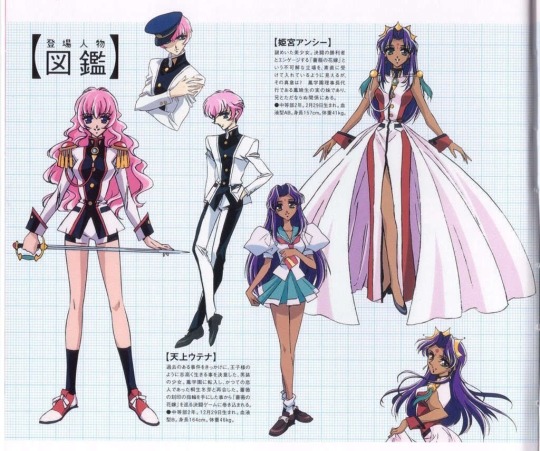
Similarly, Utena's Adolescence "boy" clothing doesn't have red, but her "prince garb" after meeting Anthy does.
Speaking of, if we continue seeing Ohtori as Utena's mindscape, the deep red of the Adolescence rose garden is like the part of Utena's mind that Anthy occupies. The tower where the girls draw is also Anthy's domain, as it's draped in red.

Even other black-white architecture of Ohtori is accented with red--Anthy has always been present in Utena's thoughts, even if subconsciously.

Alternatively, red in Ohtori could represent Anthy's mindscape "overlapping" with Utena's. Anthy is still wrestling with leaving Akio after all, and after the events of RGU, it would make sense that she and Utena share "spaces"/experiences/solidarity.
Anthy's Rose Bride dress also more closely resembles Utena/Ohtori's aesthetic (white, red with black accents), and we only see her transform into that when she is with Utena. It seems to signify that Anthy has become more familiar/recognizable to Utena, as her Rose Bride dress visually brings her closer to Utena, more so than her generic mint-green uniform.
When Utena first meets Anthy in Adolescence, a light flurry of rose petals fall from the garden above, crossing from Anthy's domain into Utena's-- they are beginning to cross each other's paths again. During the dance in the garden, a much heavier shower of roses blanket the school architecture below, as if Utena and Anthy's connection has now become much stronger. From then on, Utena would try to create a genuine bond with Anthy (as we see during the drawing session)
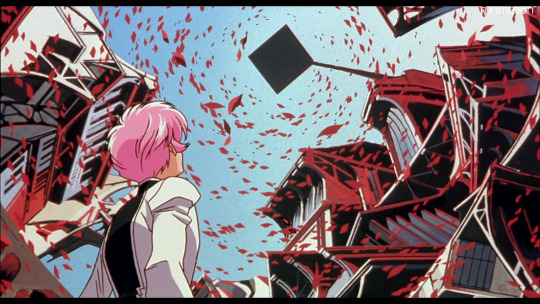

Alternatively, it could also signify a progression towards Anthy taking the spotlight when she and Utena decide to leave the school for good:

Near the end of Adolescence, we are back in Anthy's rose garden, we see the chairman's tower (associated with Anthy and Akio), and everything is washed in purples and reds-- Anthy's colors. Utena's black/white structures are now absent. From here on out, Anthy is going to drive (heh) the story forward.
I wanna talk about the architectural styles of Ohtori, but that'll be its own post once I do a bit more research. I wanna expand on some differences such as:
Adolescence- constructivist, Russian Revolution, industrial, "masculine"


Show- neoclassical/rococo? French Revolution, floral/decorative, "feminine" -- perhaps Anthy's mindscape in a way.


Anyway this was supposed to be a bullet point list of miscellaneous stray thoughts, but I guess that's impossible, so I'll just eventually write more individual utena thoughts posts lol
Please feel free to tell me what you think btw!
There's also another post by @nothing-suspicious-in-there about Utena's uniform that's a completely different take, please check it out!
#utena thoughts#uniform#architecture#ohtori#rgu#shojo kakumei utena#sku#adolescence of utena#anthy himemiya#utena tenjou#akio ohtori#analysis#design#character#rgu analysis#revolutionary girl utena
592 notes
·
View notes
Text
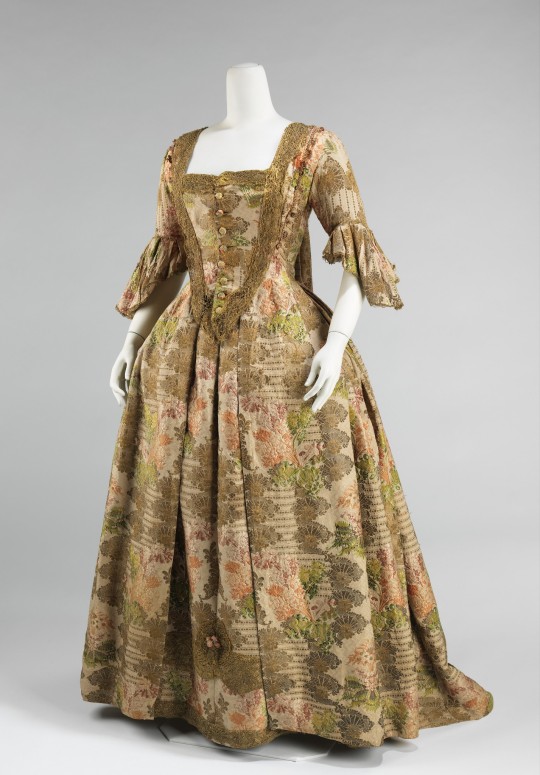

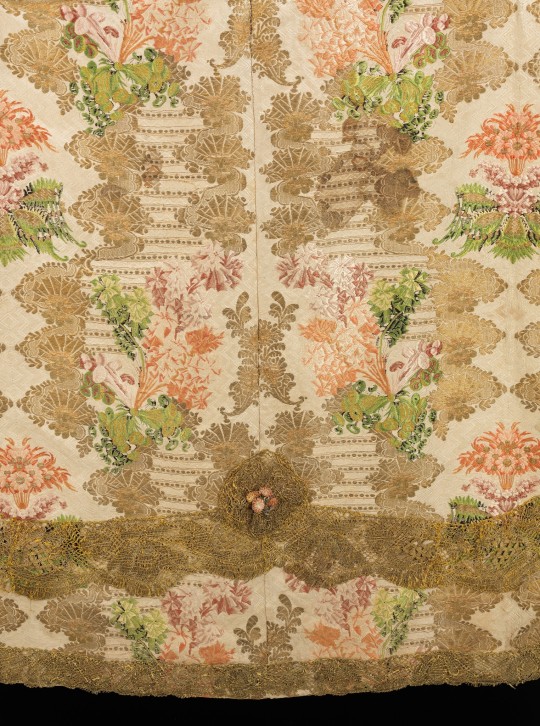
Title: Robe à la Française
Date: 1730–40
Culture: European
Medium: silk, metal
The MET Museum
This is an extraordinary example of weaving incorporating silver metallic threads in a very distinctive design. This textile was identified as an identical match to the textile of a gown worn to a Russian Imperial wedding in the in the 1730s.
Women with coquettish airs were imposing in robes à la française and robes à l'anglaise throughout the period between 1720 and 1780. The robe à la française was derived from the loose negligee sacque dress of the earlier part of the century, which was pleated from the shoulders at the front at the back. The silhouette, composed of a funnel-shaped bust feeding into wide rectangular skirts, was inspired by Spanish designs of the previous century and allowed for expansive amounts of textiles with delicate Rococo curvilinear decoration. The wide skirts, which were often open at the front to expose a highly decorated underskirt, were supported by panniers created from padding and hoops of different materials such as cane, baleen or metal. The robes à la française are renowned for the beauty of their textiles, the cut of the back employing box pleats and skirt decorations, known as robings, which showed endless imagination and variety.
74 notes
·
View notes
Text
Fashion in Uroboros
A brief overview of the different styles of fashion within the IF's setting! It was going to be much longer than it is now, since I initially explained the reasoning I chose these... but I'll resist!
Note that the fashion is not aiming to be authentic. In fact, I've highlighted some of the different ways I've attempted to make these extremely different styles take influence from one another, and even modified them to make more sense thematically for the story.
The fashion is merely inspired, not necessarily accurate to the fashion they're inspired from. Realism isn't the goal, but I still want them to be somewhat convincing, and also cool-looking! I'll also add more thoughts towards the end on this note.
༺═──────────────
Southwestern Galaio - Takes inspiration from Rococo fashion, in part because its climate is similar to western Europe (oceanic climate). Extravagant and blindingly opulent, though I envision it as incorporating more naturalistic elements, such as birds and flowers into their design. However, their design also tend to be asymmetrical and large-scaled.

Portrait of Anastasia Ushakova by Ivan Kusjmitsch Makarov; painting by Lucius Rossi; and "The proposition" by Arturo Ricci
Western Galaio - Takes inspiration from Song Dynasty China, as it also has a humid subtropical climate. A time of prosperity as well, but I chose it over the Tang Dynasty because the designs are more simplistic. I wanted this region to be more muted, but still elegant in fashion compared to other regions. Not as flashy, and much less concerned about extravagant wealth. Though it's in Song style, I enlisted the help of an article to help me incorporate some western elements to it, such as lace and fans.
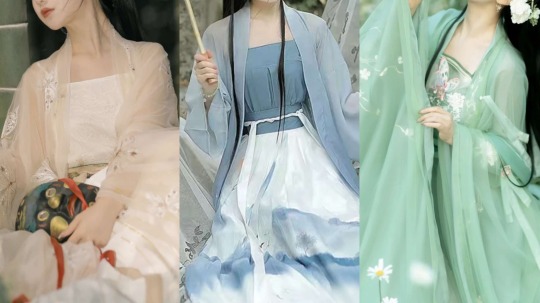
Lexie from Hanfu Story; Bleu from Hanfu Story; and Butterfly Dream from NewMoonDance!
Central Galaio (Part 1) - Humid continental climate. Closer to the southwest, their fashion reflects much of Rococo style as well, but with some modifications (no train for dresses, etc.). This is in reference to Catherine the Great's time, in which Russia had oriented itself towards European fashion (specifically, the Rococo style), but Catherine the Great dictated the fashion to be more Russian and instill national pride.

Catherine the Great by Fedor Rokotov, 1763
Central Galaio (Part 2) - Farther from the southwest and more towards the north, their fashion is much closer to Western Galaio. They still have elements of the southwest, but they have a strong emphasis on functionality and practicality, which the southwest appears to be fundamentally against.
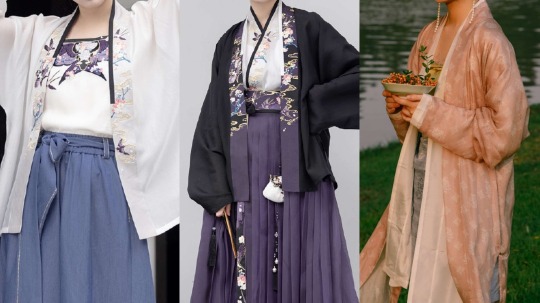
hanfu by 瞳莞汉服 (left and center); photography by 松果sir and model @白川鹅 (right)
Central Galaio (Part 3) - There's a distinct region that is a cold desert. Here is inspired by Mongolian deel. It's thicker and has several layers to withstand the cold, compared to Western Galaio's clothing, which in contrast have lighter fabrics.

13th century Mongolian deel from Mongulai, founded by Telmen Luvsandorj
Eastern Galaio - Also a wealthy coastal region of Galaio. Mediterranean climate. They take inspiration from the extravagance of the southwest, but fashion is looser, free, and light. The colors are also more natural, like white, brown, blue, etc. rather than the entire spectrum of colors that the southwest and west enjoy.
Deities - Inspired by Edo period Japan, another period of flourishing economic growth. The fashion of the deities likely came from the fashion of a past time, rather than a reflection of current human fashion. Western and Central Galaio's clothing look similar to the kosode gods wear, perhaps because these regions are more rooted in tradition compared to Southwestern and Eastern Galaio. The major modification I made for the fashion of deities, however, is making it more unisex and more relaxed.
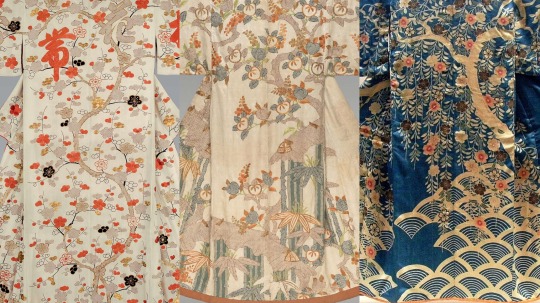
From Philadelphia Museum of Art; the Mary Griggs Burke Collection; and from asianhistory.tumblr.com
Additional Notes
I had tormented myself a lot over authenticity, but I realized the fashion can remain merely inspired, not directly referenced. I'm not actually trying to make a Walmart version of France or any of these cultures. However, I do hope that the admiration I have for these cultures shine through!
A lot of these come from periods of prosperity, the "golden ages". Galaio is beautiful and prosperous, but it obscures a deep ugliness within.
These may be subject to change, and won't be super prominent in the story itself. They merely gave me a general idea or silhouette of the kind of clothes people may wear. I think the most reference I'll give them within the IF is a general aesthetic of the clothes rather than specific details. Hence why they're merely inspired.
Thanks for reading thus far! :)
76 notes
·
View notes
Note
Share 10 facts about your OC!
I have so many, hmm.. I’ve already done my scandalous sex worker, rococo, late 18th century coquette, Audrey. X
Thank you, @arrthurpendragon. 💞
Here it goes: my first oc, ever, Catherine, also findable… here.
1. Haitian Creole, Black and Eastern European (Polish and Russian).

2. Born June 26, 1804 turned in a winter in the 1830s in New Orleans Louisiana, by a certain French thespian and disgraced bi blonde aristocrat of the late 18th century’s ancien regime. Lilian. (Yes Lilian is based on Lestat de Lioncourt 🤷♀️). Move over Lord Ruthven!

3. Fluent in 4 languages, piano forte, dance, a diplomat and should’ve been Princess if her fathers noble title wasn’t challenged by changing times. Prefers diplomacy, can use a sword and a musket/rifle. Stole her fathers cavalry sword before running away with Lilian.

4. Bi-Demisexual (Gray ace)-polyam. Cis female (she/her).

5. Religiously Haitian Vodou, culturally Eastern Orthodox Christian.
6. Turned my self insert Marian in 1922. BFFs with Marian’s ex boyfriend Oscar, a werewolf.
7. An endearing sense of ingenue-ness and hope about her despite 100+ years of vampirism, as juxtaposed with Audrey, for example.
8. Full legal first name is Ekaterina. She prefers Catherine and only Catherine, “Cat” or “chérie” will gain you a haughty laugh and the subtlest of side eyes.
9. An heiress and free person of global majority (colour) through her maman, Noëlle, Nikolai “Kolya,” her father is most substantially broke, but possessing title.

10. My first original character ever and still going. Based of Dido Elizabeth Belle but, shares a handful of similarities with AMC’s Louis de Pointe du Lac, and Anne Rice’s Merrick Mayfair.


Haitian Vodou the short version.
Haitian Vodou Wikipedia.
Eastern Orthodox Christianity.
Polish Haitians.
#Arrthurpendragon#meera answers#oc: catherine#answered#meerawrites#bisexual#vampires#regency#gothic horror#writing horror#haitian creole#haitian vodou#black vampires#lgbtq+#queer#Nola#new orleans#long post#long post tw
52 notes
·
View notes
Photo



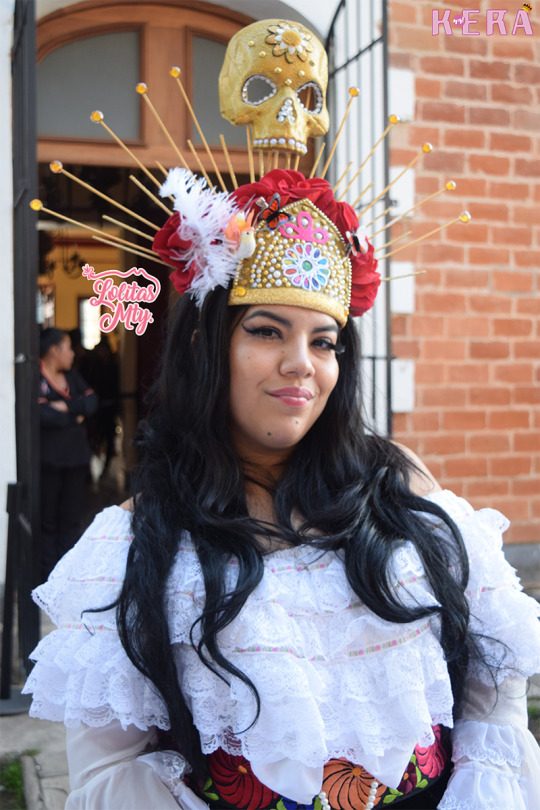
The Queen's Court: Rococo Extravaganza
Reported by Chai Latte
The evening concluded with the big contests, best team coord, best crown and best solo coord. There were many astounding candidates, the best team sweepingly won by Mia and Ángel, wearing a matching Narnia inspired outfits representing Aslan and the White Witch, best crown won by Mina whose dress and accessories inspired by Anastasia the Russian princess made more than one girl among the crowd sigh and finally the best coord which was won by Ivette with a full goth outfit, second spot by Delly who sported a steampunk outfit and myself in the third place, personifying a saint guardian of the Queen.
Overall, the event was very good since it was held by two girls who had never organized one before. It did have a few things that made it less perfect but must of them were out of their hands and were dealt as best as possible. It is evident they put a lot of work and passion in La Corte de la Reina, for which I thank them immensely. I encourage these two brave girls to try again somewhere else and continue to perfect their event, whose soul was the over a hundred attendees who met and reunited there.
Thank you for bearing with me for such a long article! Feel free to contact me at any of my social media accounts:
www.instagram.com/chailattelolita
www.facebook.com/chailattelolita
And see you next time!
#egl#egl fashion#egl community#eglfashion#eglcommunity#glb#gothic and lolita bible#gothic & lolita bible#kera#kera magazine#not my coord#fashion show#The Queen's Court: Rococo Extravaganza
73 notes
·
View notes
Text
anways my personal asoaif fashion catalogue that is so rational and not anachronistic. crownlands early medieval/roman, targs/valyria byzantine OF COURSE. glad we all agree on that. westerlands mid-medieval (? need to think a bit more about this), dorne moorish, north russian/slavic, stormlands early jacobean/caroline england, house baratheon of dragonstone oliver cromwell's protectorship, reach is idk restoration era (tyrells particularly), rococo? renaissance italy/germany for the hightowers. yes all of these coexist <3 uhhh the arryns. ok. tba. riverlands burgundian? iron islands vikings
29 notes
·
View notes
Text
Sleeping Beauty Spring: "Prinsessa Ruusunen" ("Princess Briar Rose") (1949 Finnish film)
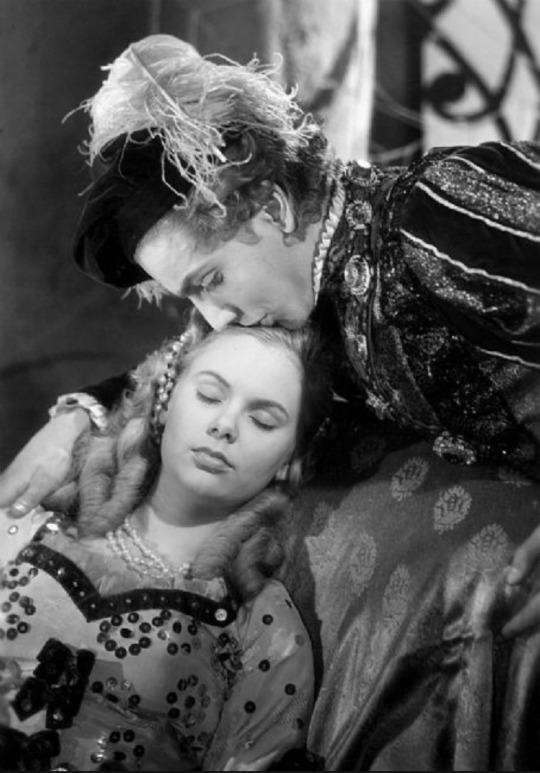
The late 1940s saw several enchanting black-and-white live-action film versions of fairy tales released in Europe. The most famous of these is Jean Cocteau's French Beauty and the Beast of 1946; another is the charming Russian Cinderella of 1947. But another, similar film was produced in a country rarely known for its cinema: Finland, where this Sleeping Beauty premiered in 1949.
Unfortunately, I wasn't able to watch the film with English subtitles, and I have no knowledge of Finnish. But luckily, there is a detailed English synopsis of the film online, which helped me understand what was happening in each moment.
Set in a stylized 18th century Rococo kingdom, the film's opening scene shows the peasants bringing gifts to the Queen (Mirjam Novero) to celebrate her recovery from an illness. But the Queen and her King (Aarne Laine) are sad because they have no child. (Was her "illness" a miscarriage?) That is, until the beautiful Fairy of Light (Eeva-Kaarina Volanen) foretells the birth of a princess. When the baby Princess Ruusunen is born (her name, the traditional Finnish equivalent of the Grimms' "Briar Rose", just means "little rose"), the King and Queen invite nobility and peasants alike to the feast – as well as the Fairy of Light, and five other good fairies, all youthful beauties in white robes and with long blonde hair. But the buffoonish Cook has lost one of the seven golden plates reserved for fairies, so at the suggestion of an impish little scullery boy named Sam – a comic character throughout the story, who, in a surreal, dreamlike touch, always stays a child even as the princess grows up – the grim, dark-robed Fairy of Death (Enni Rekola) goes uninvited. But of course she comes unexpectedly, and curses Princess Ruusunen to prick her finger at age fifteen and die, which the Fairy of Light can only soften to a hundred-year sleep.
The film's next portion is especially creative, as we spend more time in the princess's childhood than usual. On her fifth birthday, little Ruusunen visits the villagers with her nursemaid, giving them gifts and befriending a five-year-old peasant girl named Sanna. Unfortunately, she also sees a spinning wheel for the the first time and gains an interest. It's now that her parents have every spinning wheel destroyed, except for the one belonging to the castle's spinner Liisa, who confines her work to a secluded tower.
Ten years later, Ruusunen (now played by fifteen-year-old Tuula Usva) again celebrates her birthday by giving to others, this time by handing out roses. This includes a visit to Liisa's tower to give her a rose too... and when Liisa drops off to sleep, the princess indulges her longtime wish to try spinning. The Fairy of Death is there, unseen, and under her steely gaze, Ruusunen pricks her finger. But the subsequent "falling asleep" sequence is especially gentle and sweet in this film. Ruusunen doesn't collapse in a deathlike swoon, but peacefully dozes off in her chair, and the Sandman then arrives to sprinkle his sand throughout the castle. causing the rest of the court to doze off too. Afterwards, the castle is magically covered with climbing roses – thorny, but lush with leaves and flowers throughout the hundred years. A group of friendly gnomes also stay in the castle to watch over the sleepers.
When Prince Florestan (Martti Katajisto) finally arrives, Sanna, now an ancient grandmother, tells him about the sleeping princess. The peasants now wear 19th century dress, but Florestan wears Renaissance clothing for a classic "Prince Charming" look. The Fairy of Death has filled the castle with spiders and webs, but Florestan slays the most monstrous spider (a battle only seen in silhouette – a wise choice to keep us from laughing at the crude spider puppet) and scales the castle wall. He wakes Ruusunen with a chaste kiss on her head, and Cupid's arrow makes them fall in love. The King, Queen, and court awake too, the villagers greet them, the Fairy of Light blesses the prince and princess's union.
This is a sweet, charming Sleeping Beauty, with a gentle atmosphere that blends magic, humor, and warmth. The expanded role of the kingdom's peasants adds an appealing down-to-earth quality, while further charm is added by the comic portrayals of the royal courtiers, the inclusion of magical beings such as elves, the Sandman, and Cupid, and the enhanced role of children in the story. Although neither the sets nor the special effects are very sophisticated, their stylized nature suits a fairy tale, and the musical score is effective too, with shorts songs – charming, if not very memorable – and dance sequences peppered throughout the story.
Both as a unique Sleeping Beauty and as a glimpse into the world of 1940s Finnish film, this production is very much worth seeing.
@ariel-seagull-wings, @thealmightyemprex, @themousefromfantasyland, @the-blue-fairie, @reds-revenge, @faintingheroine, @paexgo-rosa, @autistic-prince-cinderella, @thatscarletflycatcher
29 notes
·
View notes
Text
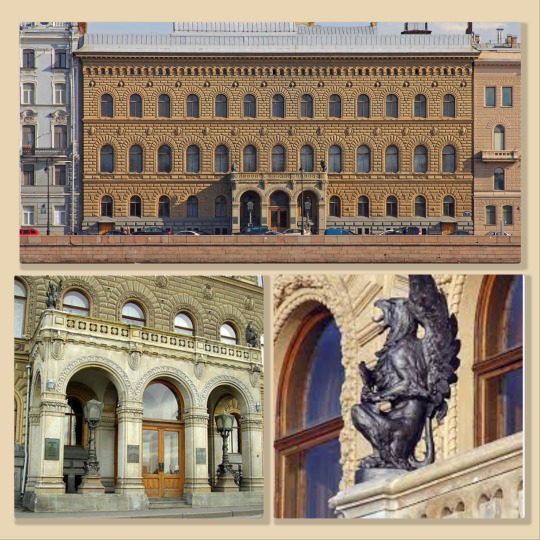
The Vladimir Palace
Grand Duke Vladimir Alexandrovich's Palace was the last imperial palace completed in Saint Petersburg. Building took place between 1867 and 1868, but decoration work continued for several years (until 1874). The Palace was blessed on the date the Grand Duke married Maria Pavlovna, and the couple moved right in. The palace's facade was done in the neo-Renaissance style; the interiors are in different styles: Neo-baroque, neo-rococo, neo-gothic, Russian, and “Moorish style.” The Vladimir Palace has 360 rooms.

A photograph of a staircase that has become iconic.
Today, the palace looks very much like it did when it was being inhabited by the Vladimirs. Many of the Grand Duke's exquisite collections of paintings, porcelains, etc., remain complete and undamaged.
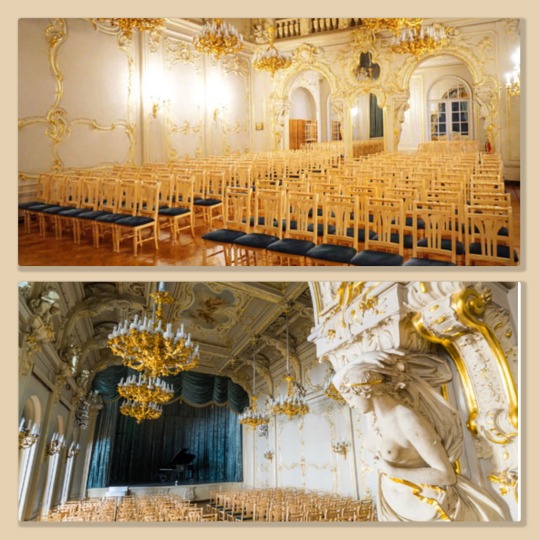
The photographs above show the palace's theater, where the Vladimirs held frequent concerts and recitals in honor of their guests.
The Vladimir Palace owes its excellent state of conservation to the fact that after the October Revolution, the palace was made the 'Academics' House' (Дом Учёных, named after Maxim Gorky); the building was frequented by academics and scientists who knew the historical value of the palace and its contents and thus treated their surroundings kindly. Consequently, its interior is better preserved than other Romanov family residences. Much attractive tiling and many internal architectural details have been retained. Not only have collections been maintained, but some have been expanded.

The picture below is the "oak room,". One can easily imagine a ball taking place in it.

Photographs of some of the sumptuous living spaces in the palace, including one of the library.
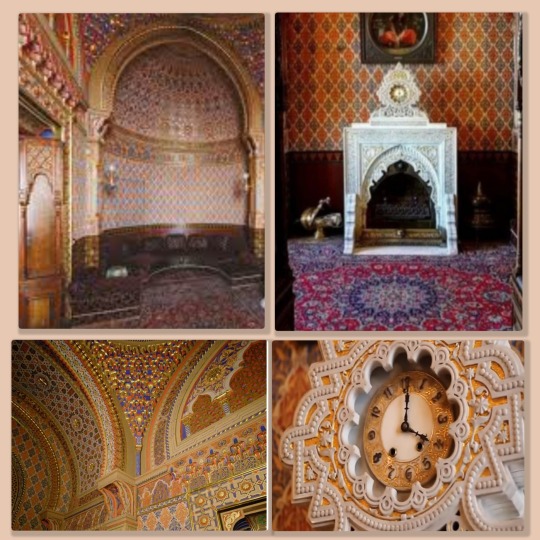
Photographs of the Grand Duchess Maria Pavlovna's famous Moorish boudoir. Notice the detailed tile work.
The Vladimir Palace is not a museum, but tours are given. It has become the meeting point of St. Petersburg’s social, cultural, intellectual, and scientific existence.
#russian history#romanov dynasty#imperial russia#Vladimir Palace#Grand Duke Vladimir Alexandrovich#Grand Duchess Maria Pavlovna the Elder.
19 notes
·
View notes
Note
didn't want to ask this in the replies but what is your process like for designing clothing for characters bc not only do they look gorgeous but you always put so much thought into your stuff, esp the historical kind. it smthin i've always kind of struggled with tbh and you make it so interesting
oh man it kinda. varies? depending on what kind of clothing i want out of a character. this gets kinda long too but bear w me lol
the fashion pieces i do, i spend a lot of time going thru fashion editorials for poses and pick up pieces of different outfits or silhouettes that i want out of a piece. for stuff like a set occupation (hunter, butcher, blacksmith) it's abt knowing time period and finding the pattern between different photos.
the more complicated ones are like. odelia and euan. where im creating a whole piece that's frankensteined from a couple different styles (rococo, georgian, regency, etc). i think the three main types of information i depend on are Goal, Silhouette, and Fabric.
so Odelia and Euan. the goals for them are very different, bc Odelia strives to be the center of attention while Euan tries to blend in with the background.
Odelia needs something extravagant and flashy, maybe brightly colored and shiny; pastels and wide skirts would be good for her, and rococo is a good place to find both. satin is good for shine and lace is good for detail, and both are relatively light materials. Euan would want something a little more subdued, possibly a tighter silhouette so he's not taking up much space. i found a picture of a russian noble while i was sifting thru various noble clothing designs, and i liked the way the silhouette was tighter and cleaner. he'd also need darker colors if he wants to hide in the shadows. i like the way darker colors look in velvet, and it's a thicker, heavier fabric, which was another trait in the photo i was referencing. i also like the weight and thickness of quilted fabric so throw that in there for fun and detail. lastly, being as they're twins and high priests, they need a way to tie the designs to each other, and i settled on a thicker neckline that suits both styles in different ways. the finished concept looks a bit like this.

granted this is always subject to change, and its a v simple version of the design i want, but its a good start
with designs like that i also like looking for textiles! rococo patterns are so pretty too, so i picked one for Euan as well. the off white would be shared between the two designs, the lighter blues for Odelia, and the darker blues for Euan
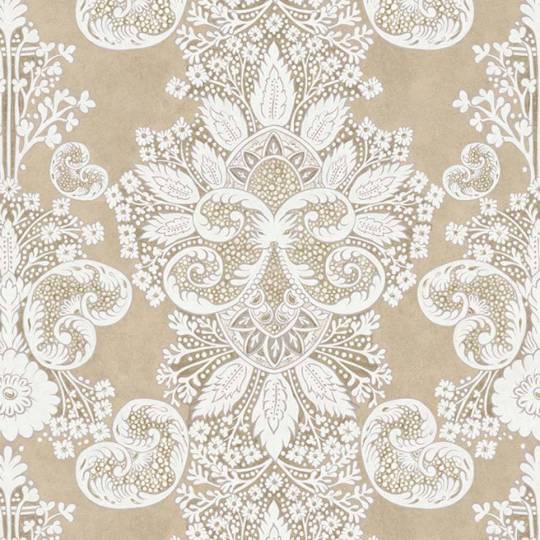
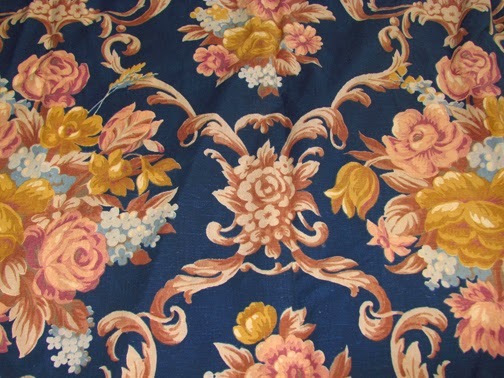

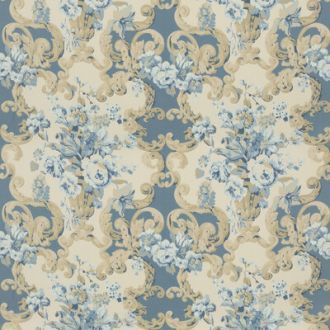
wheeze that's a rough estimation of how i go thru designs, there's a type of practicality and personality i want out of most of them so i try to research what i can when i want smth specific. part of this is admittedly bc i. am a lil obsessed w period clothing, so i already have some of that in my back pocket, but i also think just typing in "[year] fashion" is a fair place to start. regardless, having fun is a Must when you're designing clothes for a character so dont forget that bit lol. i wish you luck and godspeed, friend!
#ask#i once again got in depth with it but i LOVE designing clothes#i dont do super complicated stuff often bc low energy BUT#when i DO#i go a lil nuts w it bc its a lot of fun for me
11 notes
·
View notes
Text
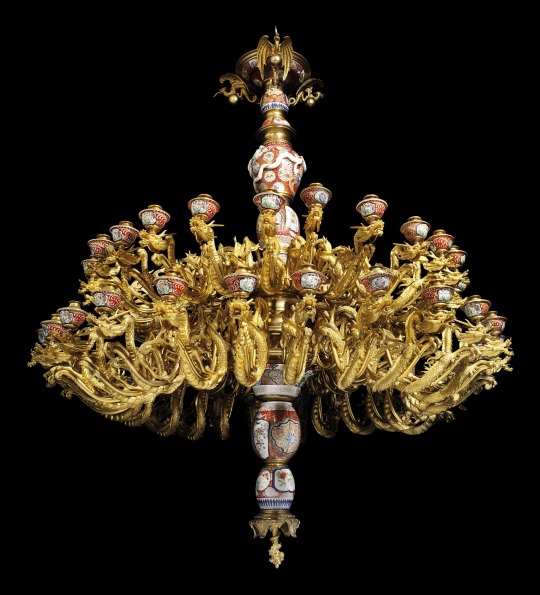
A MONUMENTAL RUSSIAN ORMOLU AND JAPANESE PORCELAIN FORTY-EIGHT LIGHT CHANDELIER
ALMOST CERTAINLY BY FÉLIX CHOPIN, CIRCA 1850
This impressive and monumental chandelier compares closely to a select group of Imperial Russian torchères combining Chinoiserie bronze-work and porcelain. Two pairs of floor lamps in Imari-style porcelain mounted with 'dragon' handles and branches are known, one pair in the Grand Staircase at the Yusupov Palace on the Moika Embankment, St. Petersburg, (illustrated here) and another in the Great Drawing Room at the Kremlin Palace, Moscow.
This chandelier is hung with forty-eight branches each modelled in ormolu as a mythological Chinese dragon. Mounted oriental porcelain, specifically using dragon modelled mounts, was made fashionable in Russia by the bronzier Félix Chopin who executed the aforementioned lamps at both the Yusupov Palace and the Kremlin and is also credited with producing similar designs for the Chinese Hall at the Tsarkoe Selo and the Arsenal Hall at the Gatchina Palace (see I. Sychev, Russian Bronze, Moscow, 2003, p. 161).
Félix Chopin was the son of the Parisian fondeur Julien Chopin.
After beginning his career in Paris he moved to St. Petersburg in 1838 and around 1841 acquired the workshop of Alexander Guérin which was on the verge of bankruptcy. A keen entrepreneur, Chopin soon revitalized the business by moving to new premises and employing new craftsman, however the real secret to his success was his keen eye that responded quickly to the slightest change in fashion (ibid p. 168).
Chopin's principal output was lighting fixtures, producing hugely varied designs for chandeliers, floor lamps, sconces and candelabra. In addition to the previously mentioned Imperial commissions, Chopin also produced chandeliers for the Marble Palace in St. Petersburg (1849), the tsarevich's personal palace in Peterhof (1850) and the palace of Grand Duke Nikolai Nikolaevich (1855-86) (ibid p. 168). He favoured the 'French Rococo' style which gave him the freedom to experiment with exuberant and whimsical designs and gave rise to his Chinoiserie revival pieces. The present chandelier therefore fits into the long tradition of decorative historicism whereby Russian designers emulated Western European fashions at the behest of the Russian nobility.
Christie’s
16 notes
·
View notes
Note
I love seeing your ER pieces. What is the name of the fashion you draw them in most of the time? Your Godwyn and Fortisax are just stunning! All of your art is stunning! Hope you have a nice day
Oh, thank you!
tbh my MA and PhD were both generally focused on material culture/fashion history, so I am incapable of giving a simple (and not terribly self-indulgent) answer to this.
Because of ER’s setting I try to stay pretty faithfully between the late Middle-Ages and Renaissance when I look at silhouette references (or medieval silhouettes with late-Renaissance/Baroque fabrics/colours - I try not to go as far as French Rococo because its too goddamn shiny and pastel). At the same time I have no qualms just making things up, be they part of the silhouette or patterns or whatnot, as long as they fit with the overall look.
Except for when I do an honest costume study, my stuff is not at all hyper-realist - so it doesn’t really translate the sumptuous quality of the references I use for inspiration. It’s a little easier when I write because I can describe them - in which case I try to stay fairly accurate or work from an exact model I’ve seen in a painting. But just to have some of them here for pure, unadulterated visual pleasure:
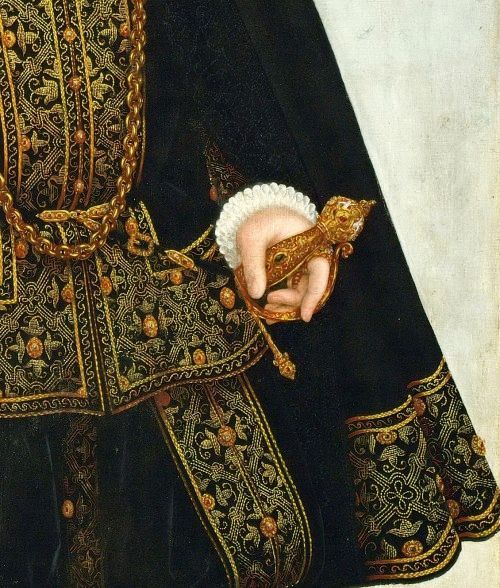



If you want to see the real/similar textures of some of these velvets, take a look at the ancient Venetian textile production house of Bevilacqua.
Otherwise I have no qualms pulling inspiration from fantasy/semi-historical inventions. Jany Temime’s work on House of the Dragon creating an entire visual language based on familiar late-medieval silhouettes and Byzantine ornament is one of my absolute favourite sets of reference. Could you ask for more than Laenor’s long doublet or Rhaenyra’s coronation outfit, or even Otto Hightower’s subtle but delicious mix of varying textures in black?



I haven’t ever really pulled from my own area of expertise (late 19th/early 20th) for ER-specific art, but a huge chunk of my research focused on the costume design of Leon Bakst for the Ballets Russes in the early 20th century - an absolute master of his craft if you want to see concept art before concept art existed. An inheritor (and contemporary in some cases) of some of the brilliant artists of the Russian Silver Age, including my personal favourites Ivan Bilibin and Viktor Vasnetsov (whose work I have used to model Miquella, for example).
tldr; I look at pretty things.
22 notes
·
View notes
Text
Things I Want in Sims 4

As someone who plays on PS4, I don’t have access to CC or mods, so I have to rely on the game makers giving me the sets I want to play. So, I figured I’d make a list of everything I want out of Sims 4. In the simplest terms, I want a Royal pack next from the Sims team.
- A Royal Family/Monarchy system complete with lines of succession, audiences with the common folk, crowns and tiaras in the hat section not attached to hair styles, royal thrones for the king and queen that aren’t a movie prop or a simple enough chair, arranged marriages as an option, private tutors or private schooling as opposed to public school for the royal children, and more. Like with different types of Celebrity, there’d be a mechanic for good kings, bad kings, and even for figurehead kings. Of course, women could hold the throne as well. Some might say it’d be weird to include royalty in a modern setting like the sims, but in a game with Vampires, Aliens, Mermaids, and Plant People, I don’t think having a king is really all that absurd for the Sims.
- Longer Dinning Tables (or just the ability to make tables longer) Because when you’re building a fancy house, sticking three dining tables together doesn’t look as good as having one long table.
- More Furnishings From the Queen Anne Category Nothing makes a house look luxurious than items from the Queen Anne decoration category. However, it is also one of the shallowest styles, and would benefit from adding even more objects to make houses look lavish and fancy. Doors, Windows, Paintings, Wallpaper, Flooring, Misc Decorations, Wall Decorations, and Plants would all benefit from giving us even more looks.
- More Fancy Clothes for CAS From Medieval-inspired clothes to French Rococo and Baroque designs, Renaissance costumes, Tsarist Russian fashions, Victorian attire, and Ottoman Turkish styles should give a nice wide variety of royal attire. This would of course also include hairstyles, powdered wigs, crowns, crown jewels, military jackets for the gentlemen, and whatever else.
- Carpets on Staircases It’s just an aesthetic I like that I’m surprised hasn’t been implemented yet.
- Assigned Seating Have you ever put multiple tables in a house only to find that your sims keep eating over the trash or in the most random rooms possible? I’d like the ability to assign a place at the primary dining table as the place to eat their meals. This would likewise ensure nobody but the King and Queen has the gall to sit in the royal throne.
42 notes
·
View notes
Text
October 2023 Book Club Picks
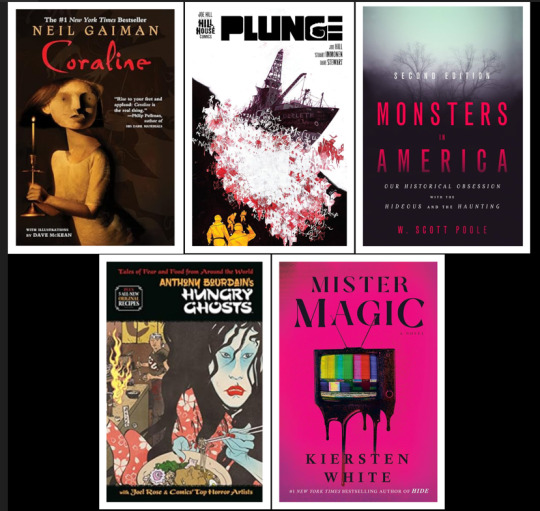
Coraline by Neil Gaiman: The little door was like a dream come true for Coraline. After her inattentive parents move her to a new house, full of oddball neighbors and nothing fun to do, Coraline thought she would go out of her mind with boredom...until she crawled through the door one day and found herself in the arms of her Other Mother, a kind, cheerful who can grant Coraline's every wish. Fun games, delicious food, never-ending adventures - it's all a dream come true to Coraline. But as she falls deeper into the Other Mother's world, she starts to realize that everything is not as it seems...and that the Other Mother has no intention of letting her leave.
Plunge by Joe Hill: In 1983, the research ship Derleth vanished near the Arctic circle. Thirty-five years later, the ship sent out a distress call. Tracing the signal to a remote atoll in the Bering Strait, the Rococo oil company hires the Carpenter brothers and their salvage crew to investigate the ghost ship. Joined by a marine biologist and an oil executive, the brothers set out on a grim mission to learn what caused the disappearance and recover the bodies of the crew...only to find that the Derleth's men aren't dead. Even if they're also not quite...alive...anymore.
Monsters in America: Our Historical Obsession With the Hideous and the Haunting by W. Scott Poole: Salem witches, frontier wilderness beasts, freak show oddities, alien invasions, Freddie Krueger - from the colonial past to the present, the monster in all its various forms has been a staple of American culture. But how did this macabre fascination take root? Poole seeks to answer that question by tracing it through history and culture, opining that the creation of the monstrous "other" not only reflects society's fears but shapes actual historical behavior and becomes a cultural reminder of inhuman acts.
Anthony Bourdain's Hungry Ghosts by Anthony Bourdain and Joel Rose: On a dark, haunted night, a Russian oligarch dares a circle of international chefs to play the samurai game of 100 Candles--where each storyteller tells a terrifying tale of ghosts, demons and unspeakable beings--and prays to survive the challenge.
Mister Magic by Kiersten White: Even thirty years after tragedy shut down production, fans of the long-running children's show Mister Magic still reminisce fondly on the internet about it - the lessons they learned, the fun they had, and above all, the protection and guidance from the show's enigmatic host. Even the former cast, called the Circle of Friends, have spent all their lives searching for that unique brand of love and fulfillment they felt under Mister Magic's watchful eye. But with no surviving footage and no information about the show's production, memories are all the Circle of Friends has. When a twist of fate finally brings the Circle back together in the remote desert compound where the show was filmed, they finally begin putting the piece together about the beloved childhood show - what happened on that deadly last day? Who, or what, is Mister Magic? And have the Friends come to this compound of their own free will...or have they been lured into a trap?
#book club#october 2023#coraline#neil gaiman#plunge#joe hill#monsters in america#w. scott poole#anthony bourdain's hungry ghosts#anthony bourdain#joel rose#mister magic#kiersten white
2 notes
·
View notes